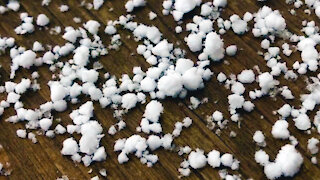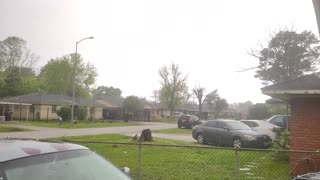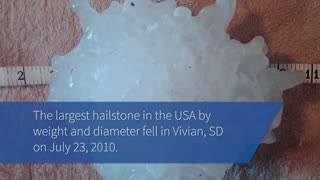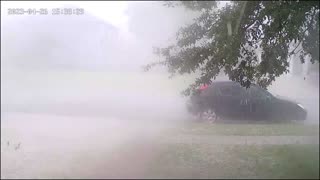Hail, thunder, lighting and heavy rain.
What a great storm here in Ottawa, Canada—complete with driving rain, lightning, window-rattling thunder, and hail stones (big ones!) bouncing off my deck and patio stones.
Hail happens when water droplets freeze in the clouds. The temperatures at the top of a cloud are a lot lower than at the bottom, so the droplets freeze rapidly if they are blown to the top of the cloud by up-drafts. Alternating up-drafts and down-drafts can send the hailstones back up to the top of the cloud repeatedly, where they merge each time with more droplets, getting larger and larger, until eventually they fall to the ground as hail.
Hailstones larger than .8 inches are usually considered large enough to cause damage and severe thunderstorm warnings are issued when hail that size or above is expected.
Hail is particularly dangerous to aircraft. Large hailstones hitting a plane can cause serious damage in seconds. And hailstones accumulating on the ground can also be hazardous to landing aircraft.
Automobiles often suffer hail damage, and it’s common in Canada for drivers to report cracked or shattered windshields due to hail. Wheat, corn, soybeans, and tobacco crops are sensitive to hail damage. Between all that auto, aircraft, and crop damage, hail is one of Canada's most expensive hazards.
The largest hailstone ever recorded was in South Dakota in 2010. It had an 8-inch diameter and weighed almost two pounds!
-
 0:50
0:50
WildCreatures
5 years ago $3.13 earnedFreak hail storm pummels streets at the equator
1.02K -
 0:30
0:30
AmplifiedLIFE
2 years agoHail in Canadian backyard
48 -
 0:11
0:11
Nature Cadence
1 year agoInsane Downpour in Texas with Lightning
5 -
 2:42
2:42
WildCreatures
3 months ago $0.96 earnedDramatic sunset footage of ominous lightning storm approaching harbor
3.7K9 -
 0:56
0:56
Haroun33
2 years agosevere thunderstorms and rains
12 -
 2:02
2:02
jerkwad152
2 months agoHail Storm, 3/21
10 -
 1:22
1:22
Earth Wind and Fire
2 months agoThe Science of Hail - Meteorology - Weather Basics
913 -
 1:03
1:03
WildCreatures
6 years ago $53.89 earnedDramatic lightning storm captured by high altitude drone
20.8K2 -
 1:55
1:55
Megalextoria
1 year agoHail Storm (2023-04-26)
12 -
 1:12
1:12
StefanieGolden
4 months agoStorms, Rain, Thunder, and Hurricanes
2071